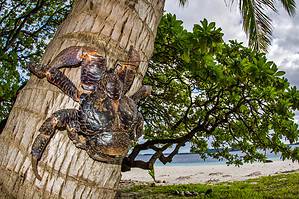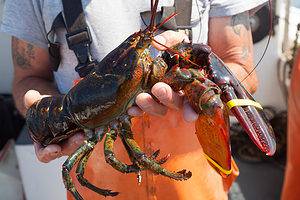Most of us know lobsters as red crustaceans with ham-handed claws and mysterious black pearls for eyes. That’s the way they look when they’re removed from the sea and served on a dinner plate, anyway.
In their natural habitats, most lobsters are a little murkier looking. Most lobsters are more of a greenish-brown hue before they’re drudged up from the sea floor. There are dozens of lobster species, so the coloration varies a little bit from group to group.
Still, lobsters are a unique species in that some individuals are born with different colors than the rest of the group. In extremely, extremely rare instances, lobsters can be yellow, cotton candy-colored — and even sapphire blue, like in this video!
Check Out the Amazing Footage Below!
How Rare Are Blue Lobsters?
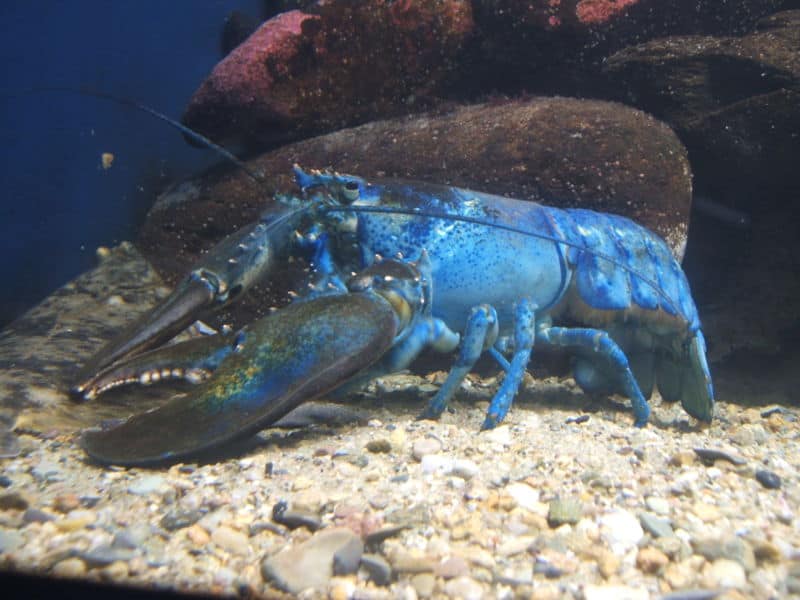
Lobsters are known for their red color, but they are not always that way.
The odds of catching the lobster in the video are estimated to be about one in two million. Blue lobsters are particularly rare, and they’re especially beautiful when compared with a standard lobster.
The man in this video is a seasoned lobster fisherman in Maine, which is where a great deal of North American lobster fishing takes place. Each year, millions of pounds of lobster are caught and processed. Fishermen have to look at each lobster individually to see if it fits the size and age requirements that determine they can be kept.
Even as an experienced fisherman, the man in this video says it’s only the second blue lobster he’s ever seen in his 10 years on the water.
Why Does the Fisherman Do the Unthinkable?
After taking a good hard look at the rare blue lobster, the man throws it back into the ocean to live another day.
He examines it closely and even says that he can tell it’s been caught by a few fishermen in the past. One would think that a lobster that rare would be kept as a keepsake or trophy, but the man had the heart to send it back.
He says that he hopes the lobster can reproduce and maybe make a few more blue lobsters for people to enjoy. It’s an admirable thing to do, but it would definitely be tough to let that one go back into the water.
Is It Normal For a Lobster to Be Blue?
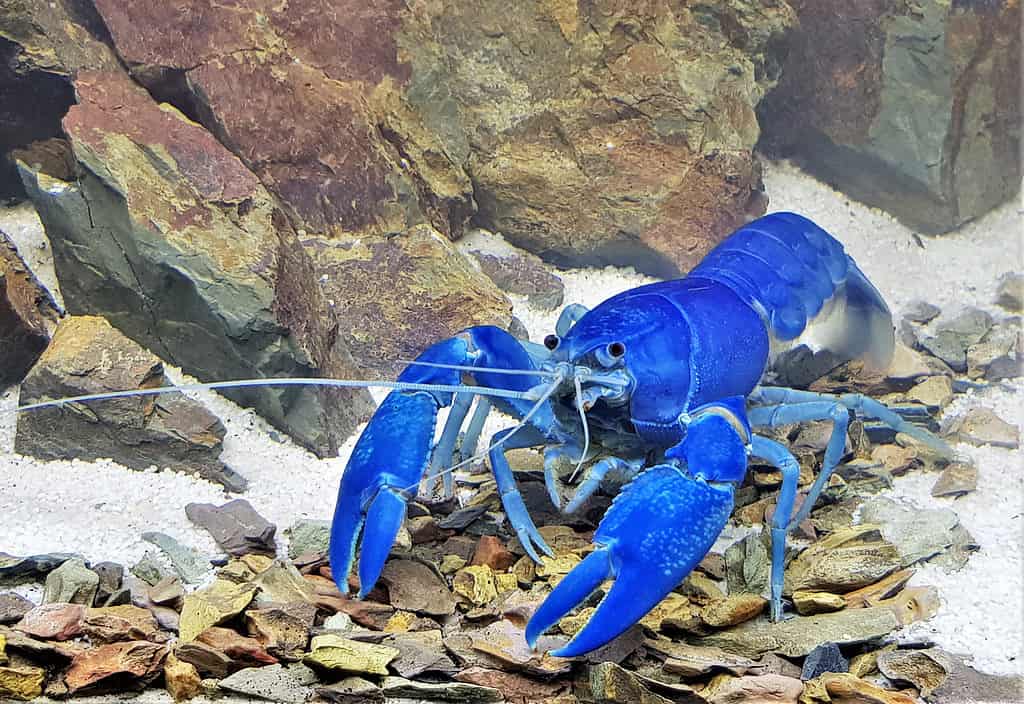
The blue coloring can vary depending on how much carotene the lobster has consumed over time.
©Arunee Rodloy/Shutterstock.com
Some lobsters are blue due to a genetic mutation that causes them to produce an excess of a particular protein, which binds with the lobster’s shell pigments and creates a brilliant blue color. This phenomenon is quite rare. Only about one in two million lobsters will be naturally born with this stunning blue hue! While this color appears unnatural, it is actually quite normal for some species of lobsters. The bright blue coloring can also vary depending on how much carotene the lobster has consumed over time. For example, if there is more carotene present in its diet, then its shell may have more of a yellow or orange tint.
How Large Do Blue Lobsters Get?
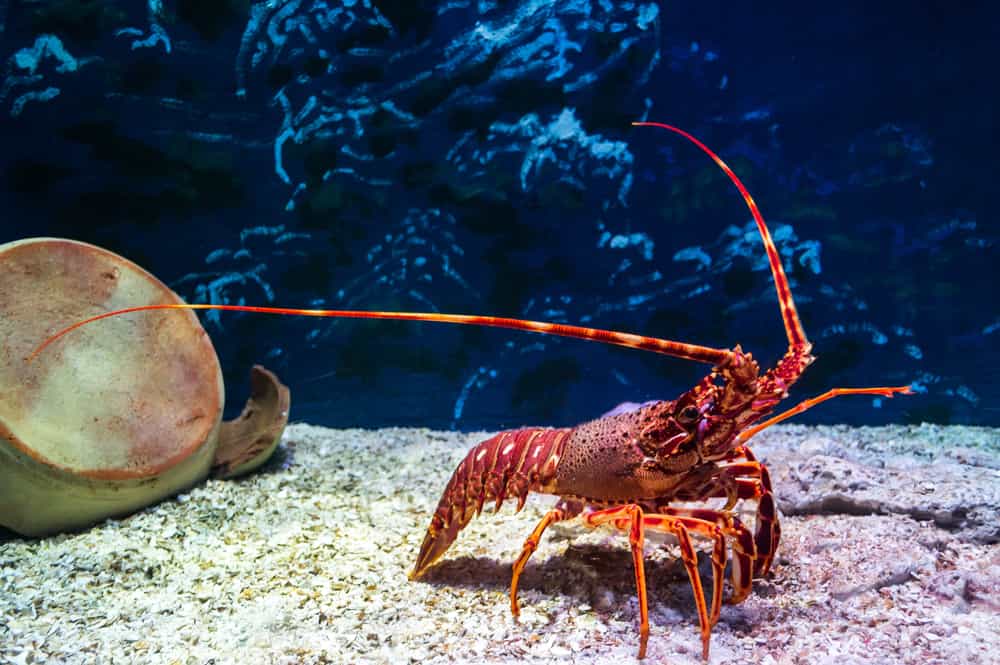
The largest lobster ever recorded was 44 pounds and 6 oz!
©Haland/Shutterstock.com
The typical lobsters rarely exceed three or four pounds, even at their largest. However, there exist astonishingly massive lobsters that dwarf these common commercial crustaceans. Some lobsters can reach lengths of up to 4 feet and weigh an impressive 40 lbs.
That’s larger than some breeds of dogs!
In fact, in 1977, a huge catch occurred in Nova Scotia, Canada, when fishermen reeled in the largest lobster ever recorded, weighing an astonishing 44 pounds and 6 ounces!
Where Do Blue Lobsters Live?
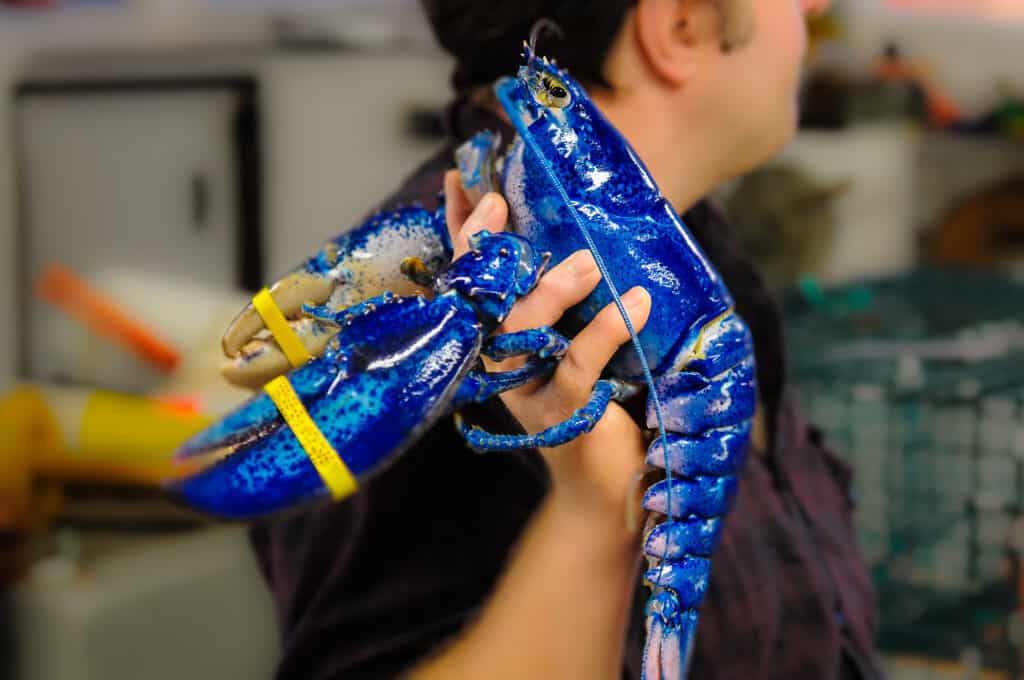
Two types of lobsters turn blue.
©Marentze/Shutterstock.com
Two species of lobsters can be blue in color. The first is the Homarus gammarus or European lobster, which is known to live in the northeastern Atlantic Ocean from northern Norway to Morocco, but not in the Baltic Sea. It is also present in most of the Mediterranean Sea, with its northernmost populations found inside the Arctic Circle.
The second type of blue lobster is Homarus americanus, or American lobster, which lives along the Atlantic coast of North America from Labrador in the north down to Cape Hatteras in North Carolina.
What Do They Eat?
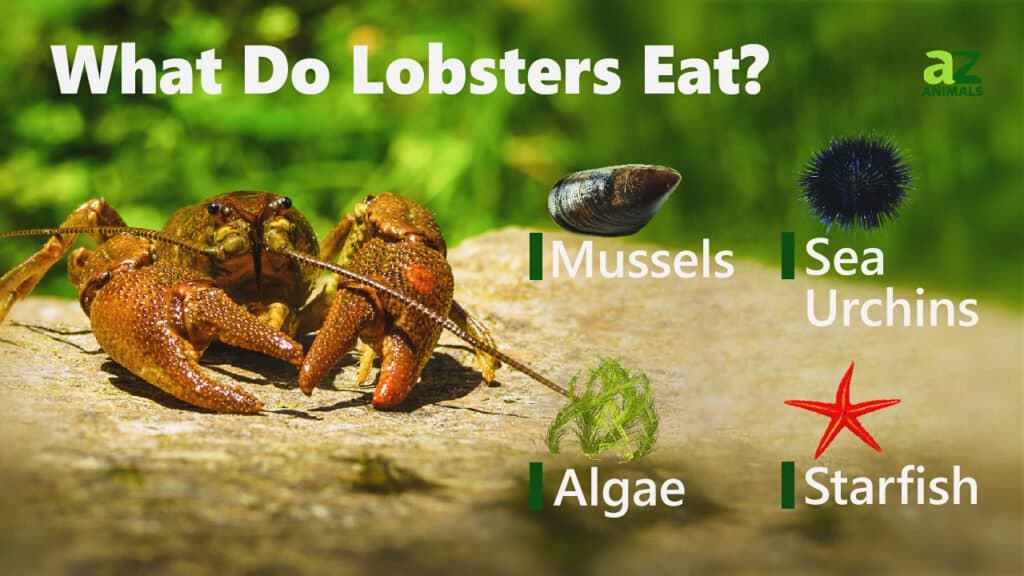
Lobsters are carnivorous and mostly feed on other smaller marine creatures. Depending on the species, their diet includes mollusks, small fish, clams, worms, and even other lobsters. They typically forage for food during nighttime hours when it is cooler, and there are fewer predators around.
Some species of lobster also have a taste for plant-based foods like seaweed or algae, which they can find in shallow waters close to shorelines. With their powerful claws, lobsters will tear apart any animal that happens to get caught inside them when scavenging for food, such as crabs or mussels. Lobster meals usually consist of multiple courses, with protein being the main focus, but some adventurous individuals may be able to enjoy a sweet dessert course made out of sea urchin brains!
Lobster Lifespan
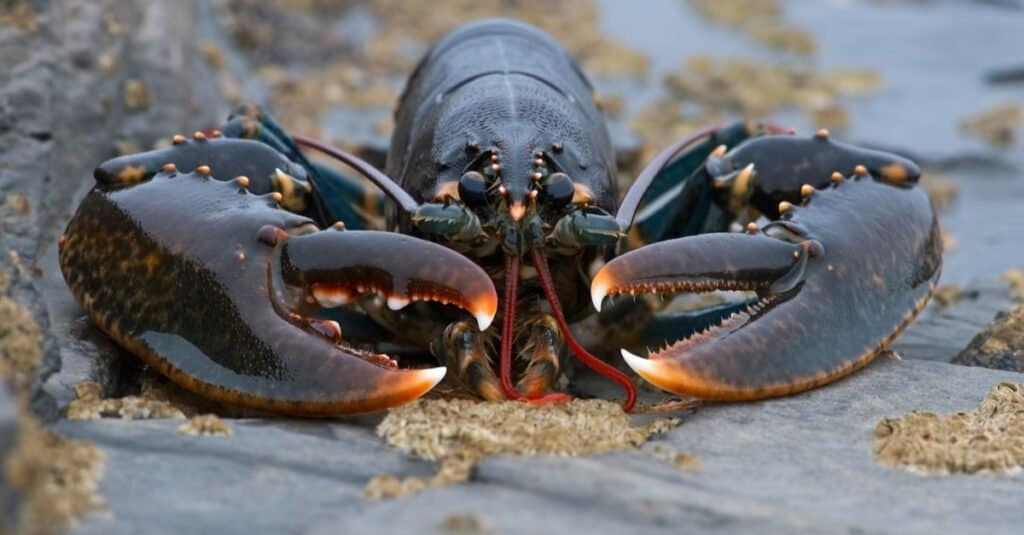
The American lobster can live for around 35 years, although some have lived up to 50 or even 100 years!
©davemhuntphotography/Shutterstock.com
The lifespan of a lobster can vary depending on the species. The American lobster (Homarus americanus) has an average life expectancy of around 35 years, although some have been found to live up to 50 or even 100 years! Sadly, most lobsters that you see in grocery stores and restaurants are killed for food when they are only 3-7 years old.
In terms of threats, lobsters are increasingly becoming vulnerable due to overfishing, habitat destruction, and pollution. In addition, rising ocean temperatures due to climate change can also negatively impact their population. Fortunately, conservation efforts such as marine protected areas and regulated fishing seasons have helped increase the numbers of these incredible creatures in recent years. However, more work needs to be done if we want future generations to enjoy healthy lobster populations for many decades into the future!
Other Incredibly Rare Lobsters
Blue lobsters are about one in two million, but there are lobsters that are even rarer.
Cotton candy and white lobsters are the rarest in the world. The odds of catching either of these lobsters are estimated to be around one in 100 million.
Another extremely rare lobster is the split-colored lobster. This coloration shows up in one of every 50 million individuals. The next rarest are the yellow, orange, and calico lobsters, which are one in 30 million.
These variations in color are genetic mutations that impact the organic compounds in the shell. Interestingly, all lobsters turn red when they’re cooked. The pigment cells all break down when heated, turning lobsters the bright red color that we associate them with.
The odds of a lobster being red in the wild are actually lower than the odds of a lobster being blue, at about one in 10 million.
Lobster vs. Crab: What Is the Difference?
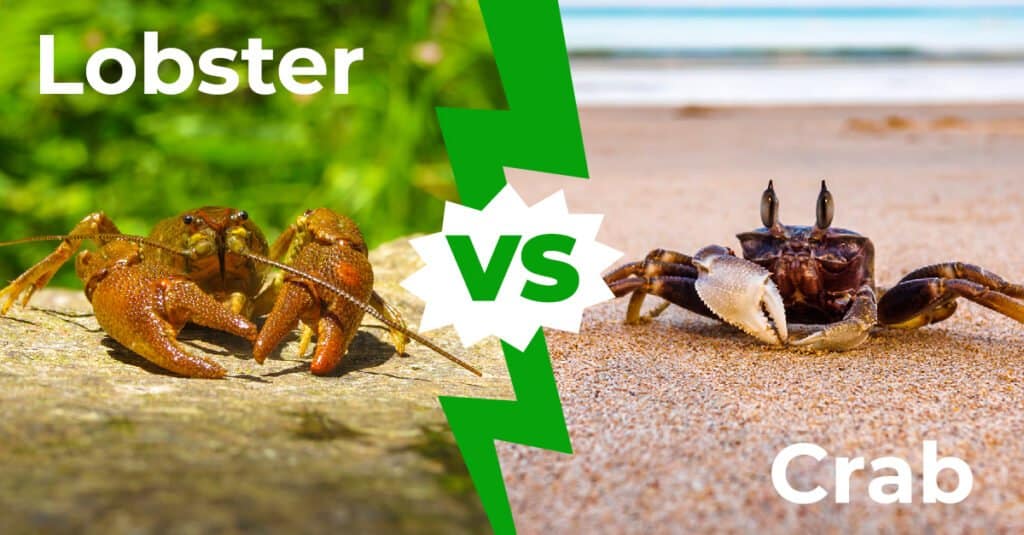
When it comes to sea creatures, two classic favorites come to mind: lobsters and crabs. While they may look somewhat similar in terms of their exterior shells, these two crustaceans have some distinct differences between them.
The most obvious difference is the shape of the body. Lobsters have cylindrical bodies with a tail fan at one end, while crabs have more rounded bodies with four pairs of walking legs on either side. In addition, lobsters typically grow much larger than crabs.
Another key difference lies in how each animal moves around its environment. Lobsters use claws for swimming but also possess jointed legs which allow them to walk along the ocean floor as well as climb rocks and other objects up from the water’s depths if needed. On the other hand, crabs generally only crawl or scuttle across surfaces using their legs rather than swim as lobsters do, though they can still take short dives into deeper waters when required!
Finally, what kind of food each creature eats sets them apart too! Lobsters tend to be carnivorous eaters who feed on smaller fish and shellfish, whereas crabs are omnivores who usually consume algae as well as small invertebrates such as worms or insect larvae found near shorelines or shallow waters.
The photo featured at the top of this post is © Marentze/Shutterstock.com
Thank you for reading! Have some feedback for us? Contact the AZ Animals editorial team.



